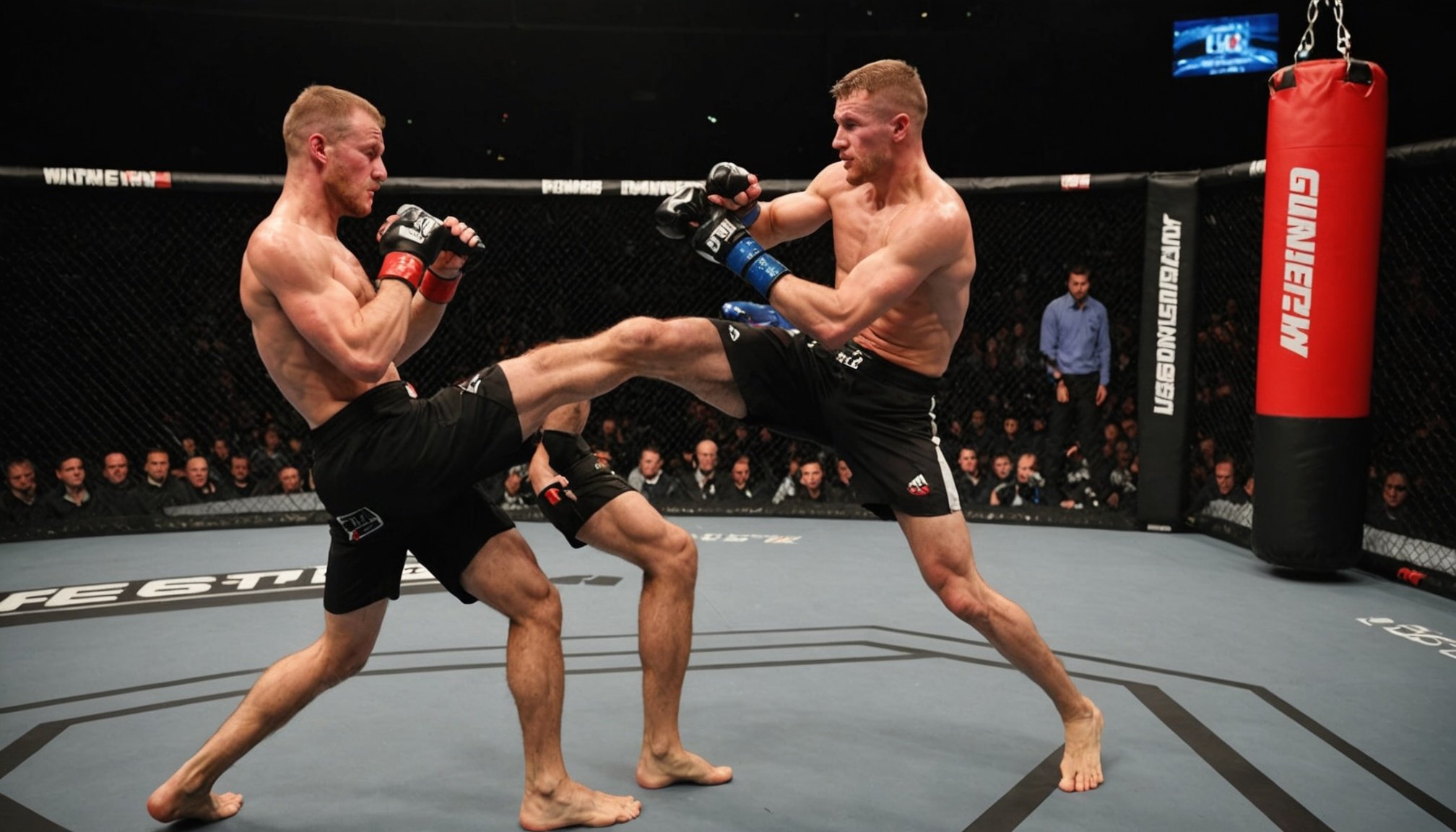Understanding Biomechanics in Martial Arts
The field of biomechanics in martial arts is fascinating, delving into the science of movement and the interaction of physical forces on the body during combat sports. This discipline is essential for understanding how practitioners can optimise their techniques and improve performance. It encompasses the study of kinematics and kinetics, which are integral parts of kinesiology, to ensure movements are both effective and safe.
Biomechanical principles such as balance, leverage, and efficient energy transfer are central to martial arts. For example, maintaining a low centre of gravity enhances stability, while optimal leverage allows for maximum force application with minimal effort. These principles help martial artists enhance their skills by understanding the physics behind movements.
Also read : What are the benefits of cross-training in different combat sports for overall skill development?
Moreover, biomechanics in martial arts directly influences movement efficiency and technique. Knowing how to generate power through precise movements can prevent wasteful exertion, making techniques more effective. For instance, aligning the body correctly during a punch or kick can maximise impact force while reducing injury risk. Mastery of these principles significantly contributes to a martial artist’s prowess and longevity in practice, emulating a smart, science-backed approach to learning and executing martial skills.
Application of Biomechanics in Defense Techniques
Integrating biomechanics training into defensive techniques offers a transformative edge in modern fighting strategies. By harnessing the principles of biomechanics, fighters can refine movements, optimise energy usage, and reduce injury risks, giving them a significant advantage over those relying solely on traditional methods.
Also to see : Boost your fencing lunge: transform uk athletes” performance with dynamic plyometric training techniques
Enhancing Defensive Techniques
Incorporating biomechanics allows fighters to understand the mechanical aspect of movements. This understanding helps them to execute defense techniques with greater precision. For instance, employing angle manipulation and leveraging body mechanics can improve defensive effectiveness, allowing a fighter to navigate an opponent’s attack with minimal effort.
UK Fighters Leading the Way
Case studies of UK fighters demonstrate the effectiveness of biomechanics in training programs. These fighters adopt biomechanically-informed techniques to enhance reaction times and optimize defensive postures. Such application of biomechanics has shown marked improvement in performance, validating its importance in modern martial arts training.
Traditional vs. Biomechanically-Informed Strategies
Traditional strategies often base effectiveness on repetitive practice and endurance. However, biomechanically-informed strategies emphasize precision, optimal posture, and energy efficiency. These strategies reveal how small changes in posture and movement can significantly enhance a fighter’s defensive capability, proving biomechanical principles to be a game-changer in training regimes.
Benefits of Biomechanical Training for UK Fighters
Biomechanical training is essential for UK fighters seeking to enhance their performance. By leveraging biomechanics, athletes can achieve performance enhancement through improved agility. This training focuses on optimizing movement patterns to increase efficiency, allowing fighters to execute techniques with precision. The application of biomechanical principles helps fighters pinpoint weaknesses in their techniques and refine their strategies, thus leading to more effective training sessions.
Injury prevention is another significant benefit stemming from biomechanical training methods. By understanding and applying biomechanical insights, fighters can reduce the risk of injury. This is accomplished by promoting safe and efficient movement patterns, ensuring that fighters maintain proper form and technique. Coaches can utilize biomechanical assessments to tailor programs that address specific vulnerabilities, reducing the likelihood of strain or injury during both training and competition.
Moreover, biomechanical principles can optimize training programs, focusing on long-term athlete development. Training effectiveness is enhanced by identifying individual needs and adapting sessions accordingly. Through detailed biomechanical analysis, fighters benefit from bespoke training regimens that hone their skills and maximize performance potentials. Consequently, biomechanical training equips UK fighters with the necessary tools for exceptional achievement in their respective disciplines.
Practical Integration of Biomechanics in Training Programs
Incorporating biomechanics into training programs enhances performance effectiveness and reduces the risk of injuries. To integrate these concepts, begin by assessing the current training regimen. Coaches can gradually introduce biomechanics exercises by focusing on technique refinement and understanding body movement patterns.
Step-by-Step Incorporation
- Assessment and Evaluation: Evaluate the athlete’s movement patterns and identify areas for improvement using biomechanical analysis.
- Tailored Exercises: Introduce exercises specifically designed to address identified weaknesses, supporting posture alignment and muscle engagement.
- Progressive Complexity: As athletes become comfortable, gradually increase the complexity of exercises to enhance their adaptability and proficiency.
Biomechanics Exercises Recommendations
- Functional Movements: Incorporate exercises such as squats, lunges, and deadlifts which promote optimal joint function and muscle coordination.
- Plyometric Drills: Enhance explosive power and agility, crucial for both fighters and general athletes.
- Core Stability Exercises: Focus on exercises that stabilize the torso to improve overall balance and control.
Coaching Strategies
Coaches should employ strategies to help fighters grasp biomechanical principles within their training programs. This involves interactive learning sessions, providing visual aids or video analysis, and encouraging feedback during practice. By embedding these concepts, athletes are empowered to understand and adjust their movements effectively, enhancing performance and minimising injury risks.
Future of Biomechanics in Martial Arts
With advancements in training and technology in sports, the future of biomechanics in martial arts is poised for exciting developments. The integration of sophisticated technologies promises to significantly evolve combat training methodologies, offering athletes more precise and effective techniques.
One major prediction is the rise of virtual reality (VR) and augmented reality (AR) in training environments. These technologies provide real-time feedback on movements, allowing practitioners to refine their techniques with laser-like precision. Athletes can now experience immersive environments that simulate real-world combat scenarios, thus enhancing both physical agility and mental preparedness.
Moreover, ongoing research into biomechanics holds immense potential for novel technique development. By understanding the intricate workings of the human body and its biomechanics, new efficient and powerful movements can be crafted. Scholars are exploring optimal body mechanics to not only improve performance but also reduce injury risks.
The implications of these technological innovations extend further. Coaches can utilize data analytics to customize training plans, analyzing each athlete’s unique biomechanics for personalized improvement strategies. As we embrace these trends, the convergence of biomechanics and technology heralds a new era in martial arts, where traditional skills are augmented by cutting-edge scientific insights.











